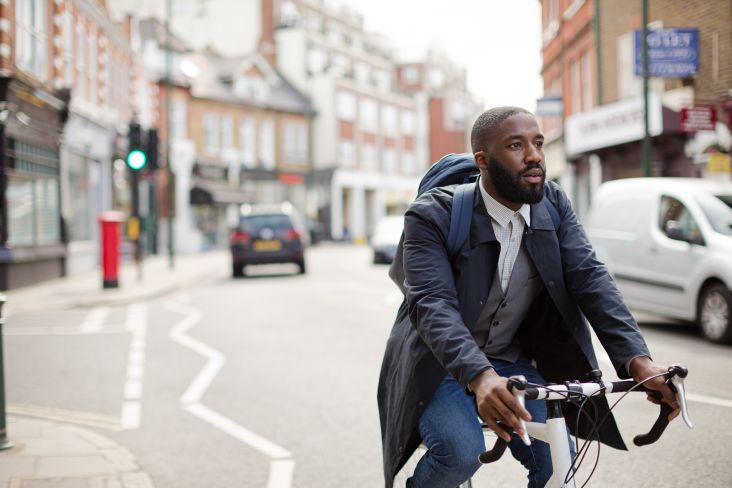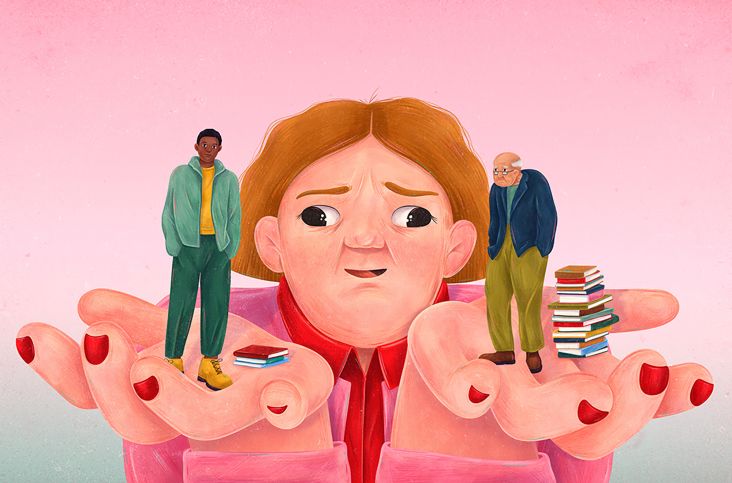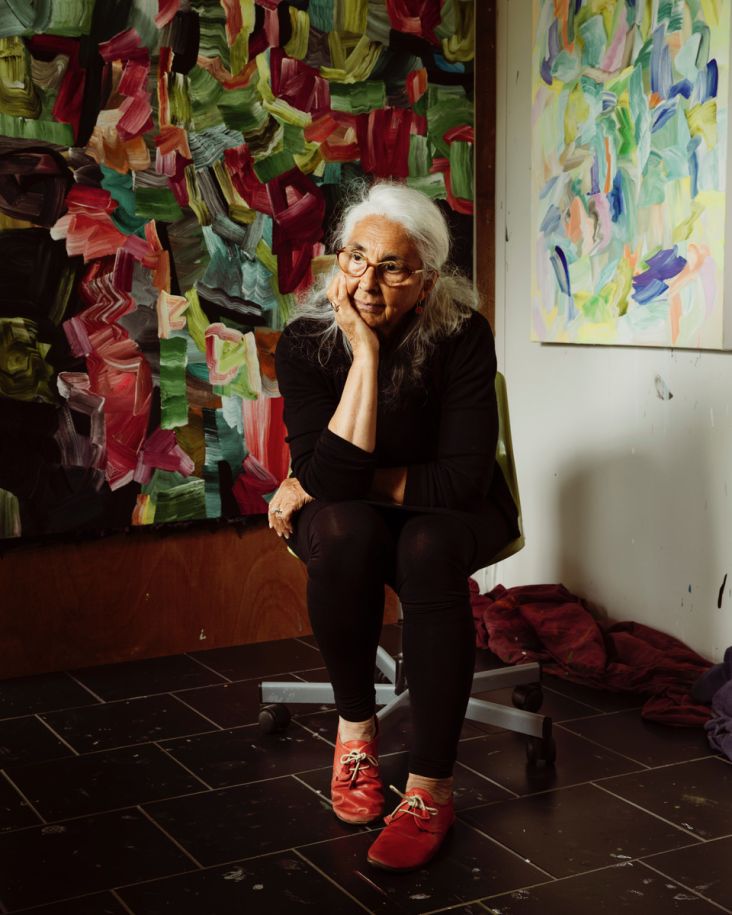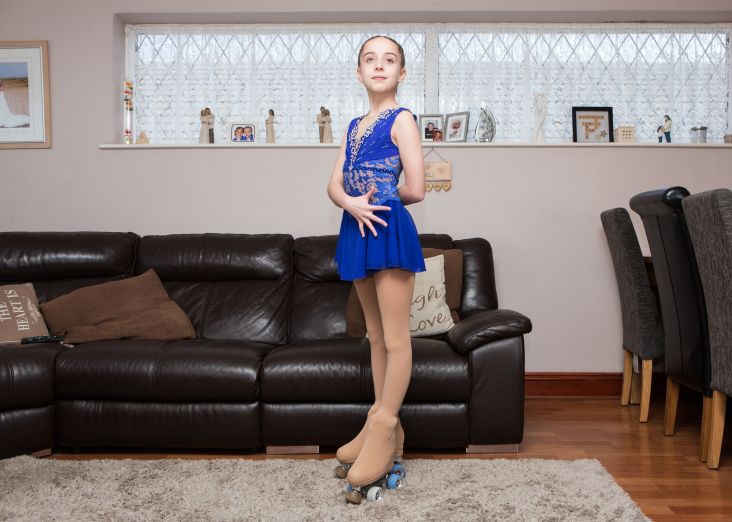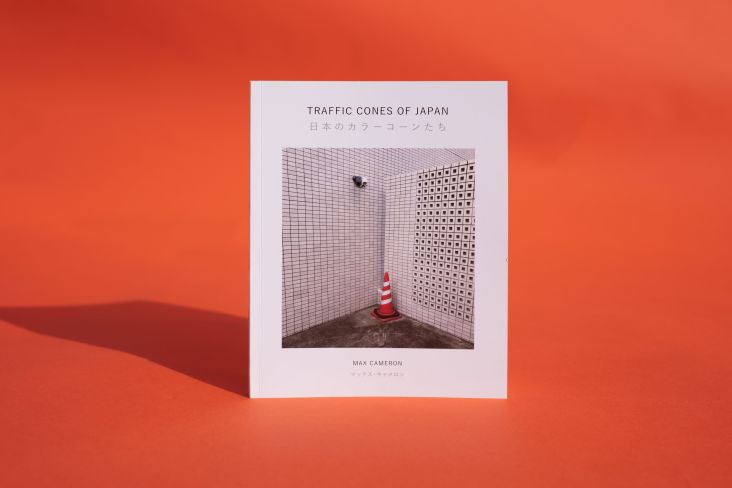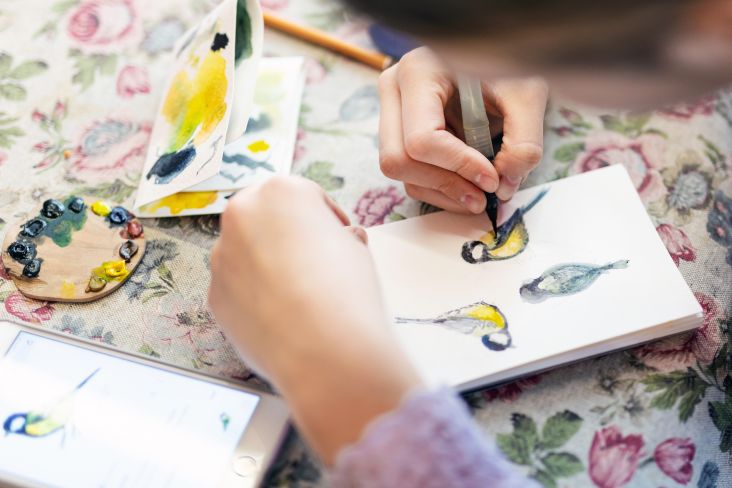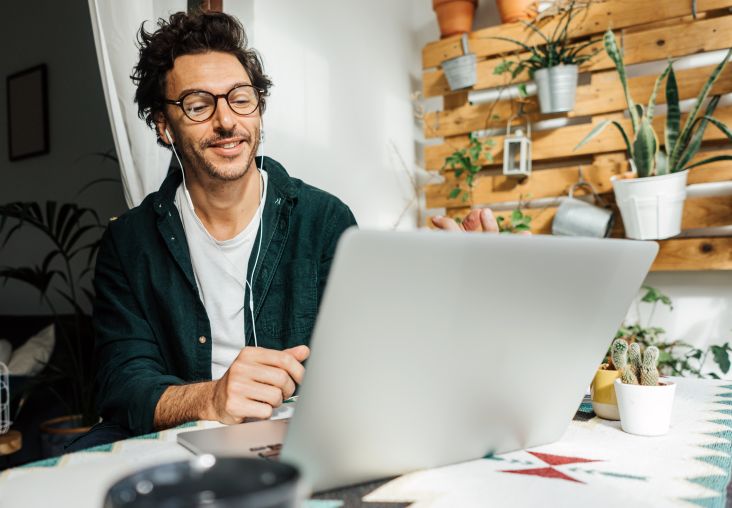Artist Julia Kuzina paints tiny bird pictures that break free from the canvas
Self-taught Russian artist Julia Kuzina balances her love of nature with pop surrealism in her series of small bird paintings that aim the defy the constraints of the canvas by attaching objects to their surface.
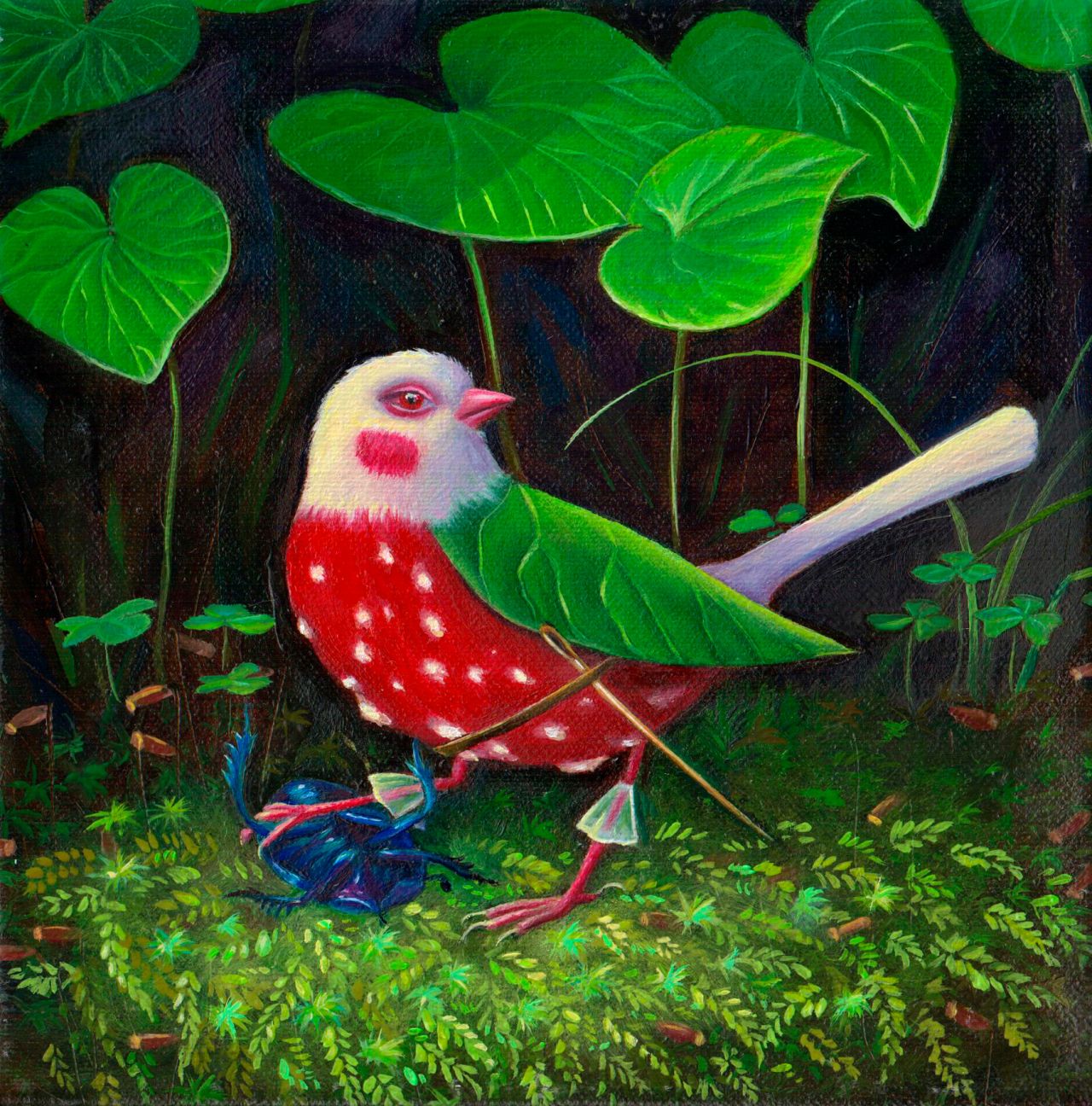
Like many things in the world, size doesn't necessarily matter when it comes to art. Take the tiny bird paintings by Julia Kuzina, which measure less than six inches square. Yet within the confines of these tiny canvases, she creates beautifully bizarre worlds where birds hunt with needles, hitch a ride in a shell, and even wear a skull for a crown.
Speaking of where the idea for this surreal series came from, Julia tells Creative Boom that she was inspired by the little birds that started to appear on her balcony. "Mainly sparrows and sometimes great tits," she reveals. "It was already cold, so I hung a huge feeder for them. Since then, I've been watching them."
She adds: "The birds are super sweet and friendly. They communicate with each other, sometimes even fight. They let people watch their lives, and they live close to the people, but they're free.
"Birds play an important part in nature, so in my paintings, they can control the world and learn much more than humans. At the same time, they take on human traits – sometimes vices, they have the same eyes as a girl character in my other paintings."
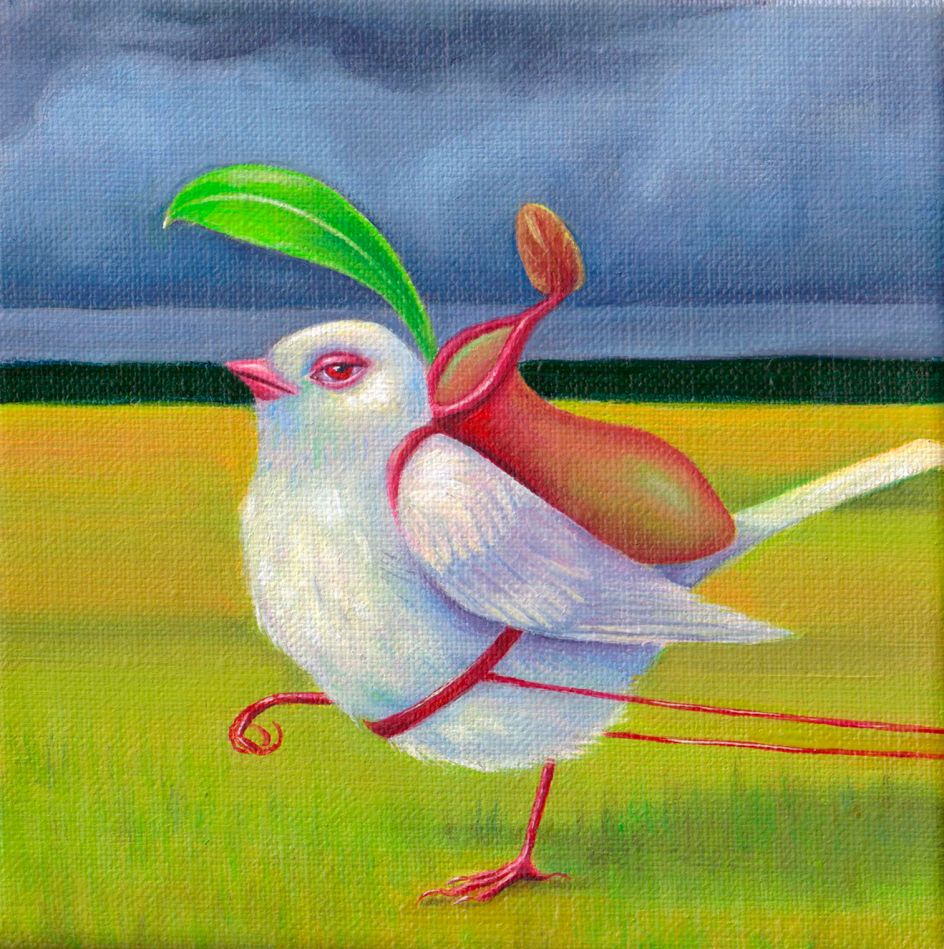
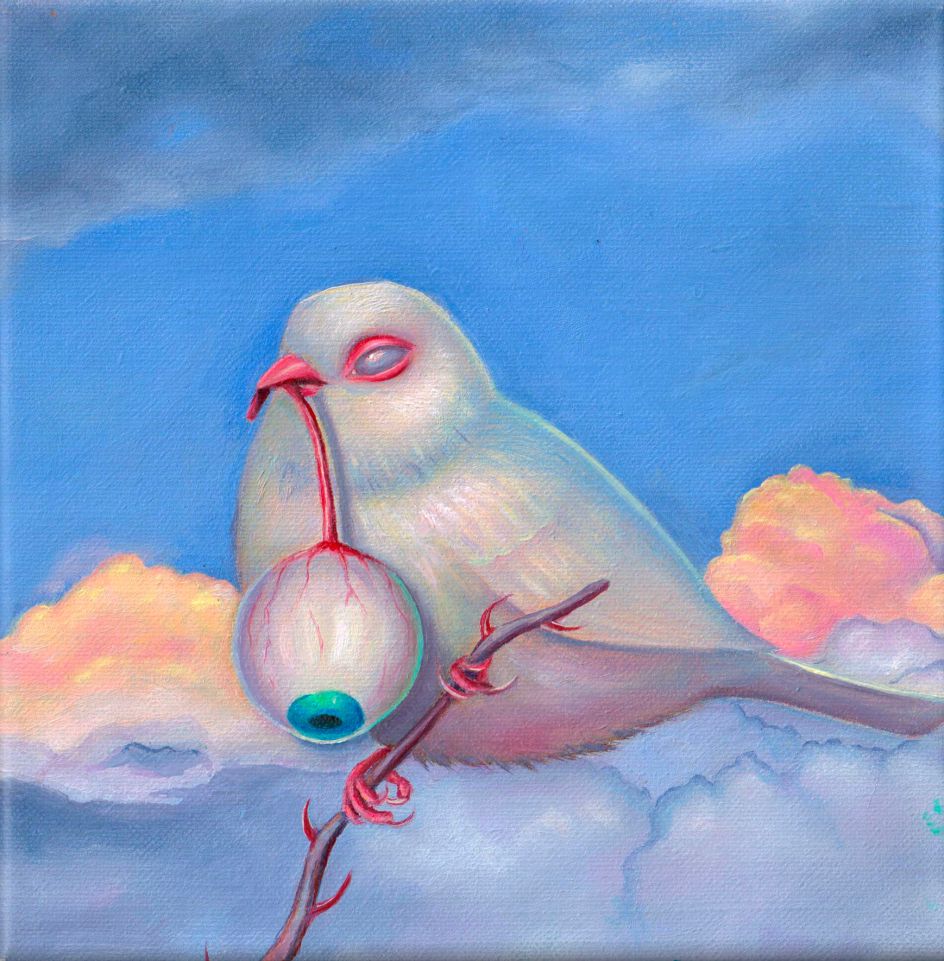
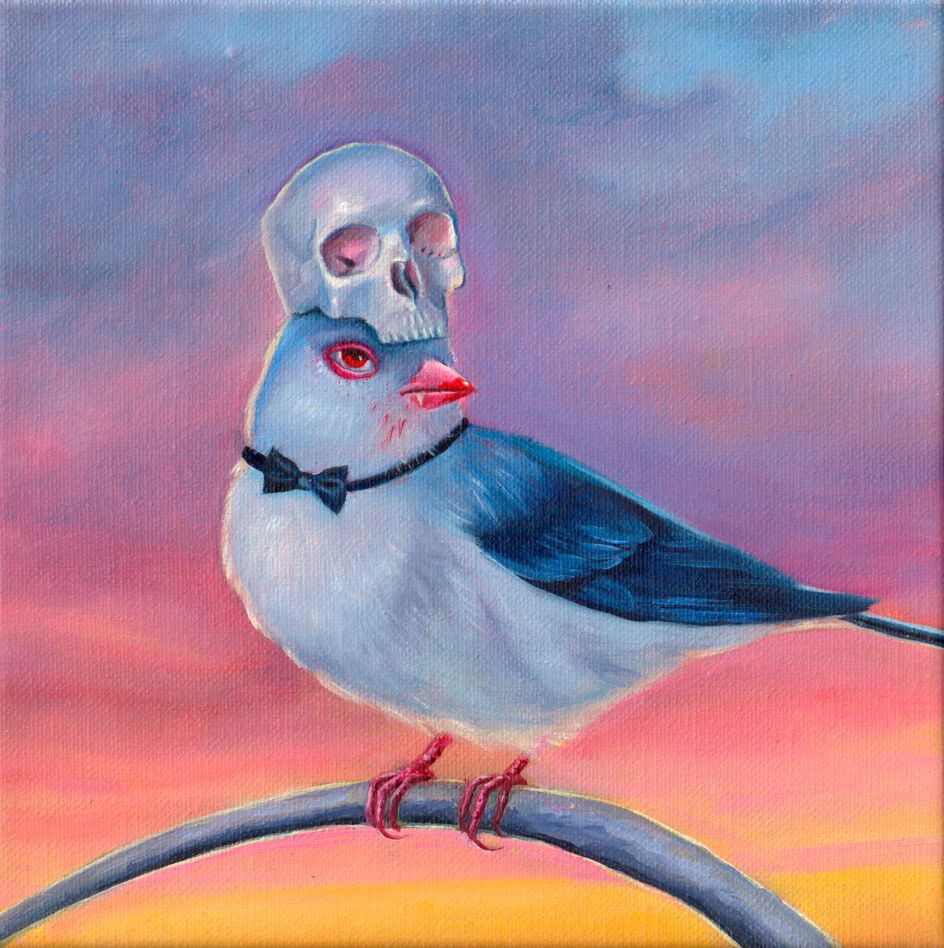
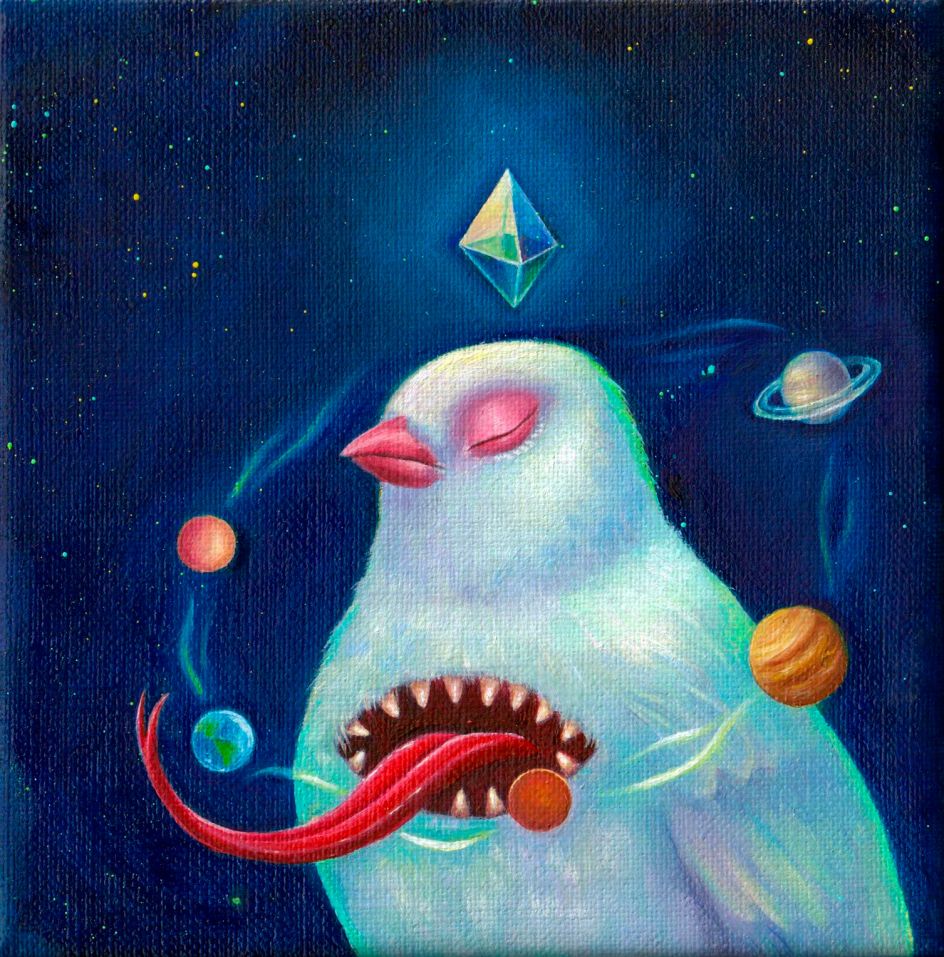
As for their petite proportions, Julia reveals that this results from stretching larger canvases over the stretcher bar herself. This results in small pieces of excess canvas being left over. Not one to be wasteful, and with a desire to be eco-friendly that ties into her love of the natural world, she decided to put them to good use. "Plus, the little format is just the best for little bird paintings."
The flip side of being inspired by nature and the beauty of its creatures, though, is that Julia is also preoccupied with mankind's destructive influence over it. "I feel so much pain about it," she explains. "This pain and anxiety are transformed into visual images. Plants, people and animals in my paintings are not only connected but also have common properties and can be transformed into each other. It's a reference to the fact that we're connected."
Another way that Julia gets her emotions across is by immersing her viewers in the plot of her paintings. Her bird series is a prime example of this, as she attaches cranberry-red beads to the surface of her miniature canvasses. "These beads are a connection between the physical world of the viewer and the fantastic world of the painting," she reveals. "They belong to both worlds."
Depending on how the light shines on them, these beads take on new properties. Julia says that it is as if the plot of the painting leaps off the canvas and interacts with the world when the sun shines a red shadow on them. "By sewing beads on the canvas, I spoil it to some extent because I make holes. This process cannot be rolled back. This is also a kind of act of destroying during creation."
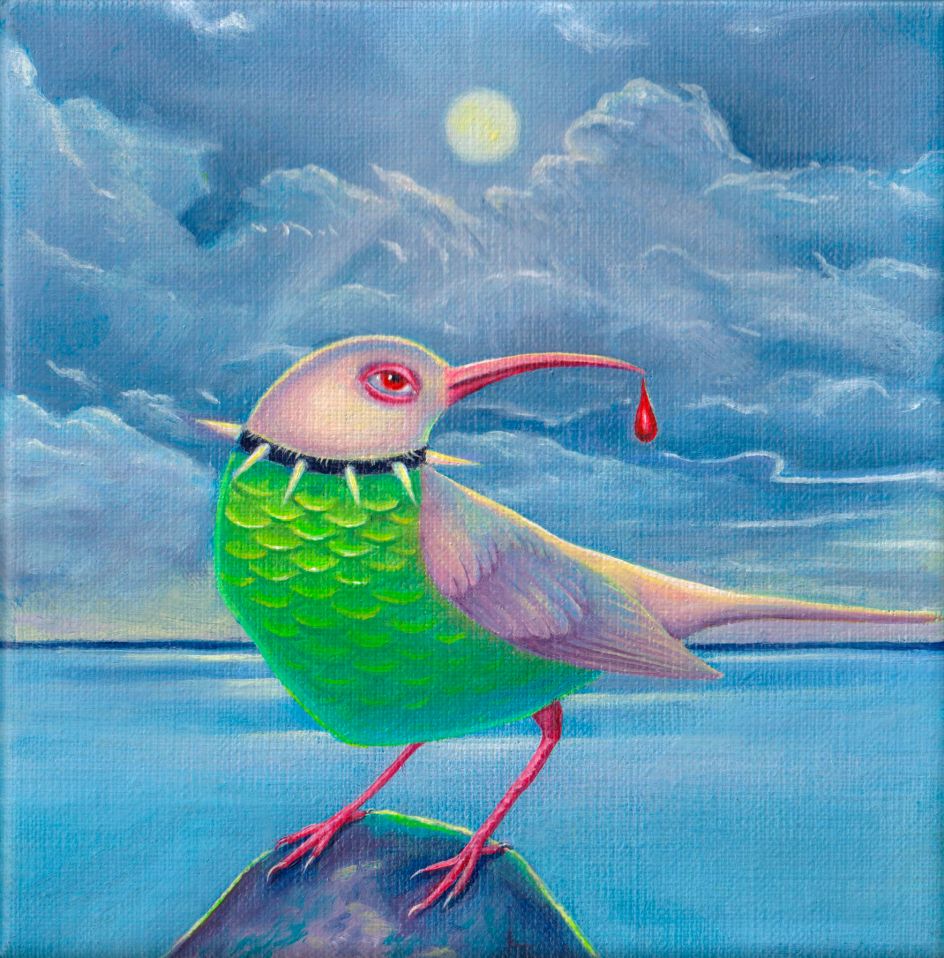
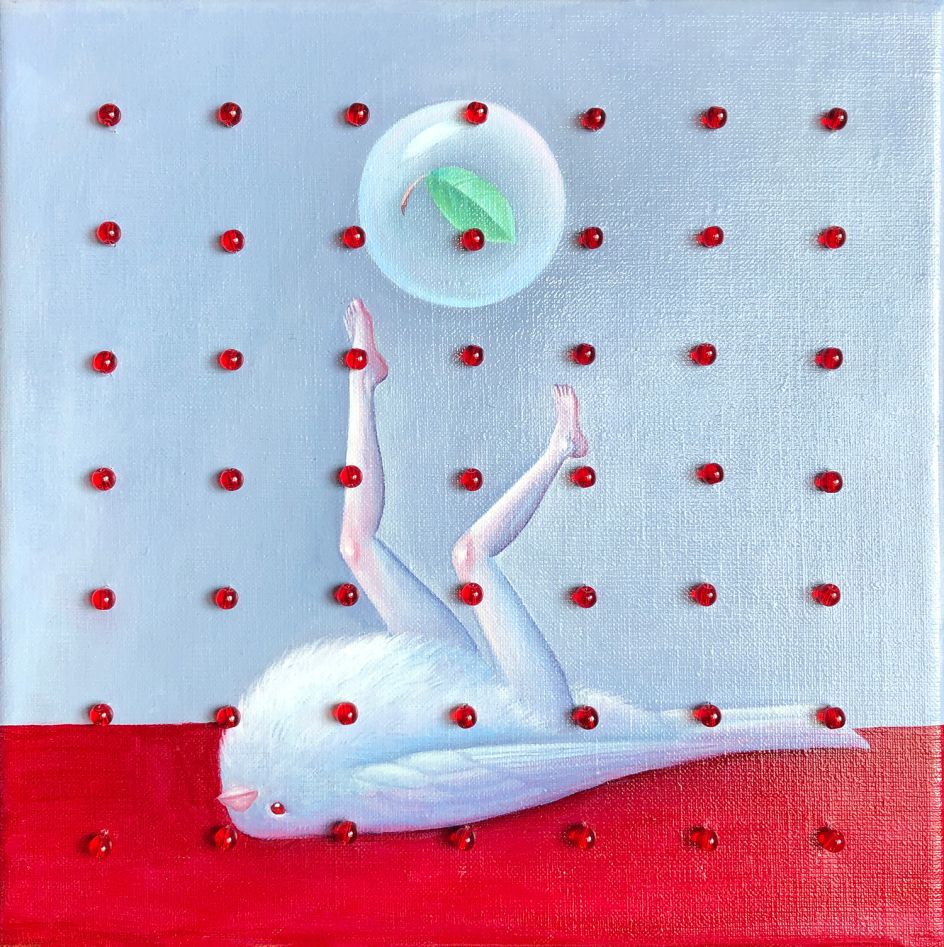
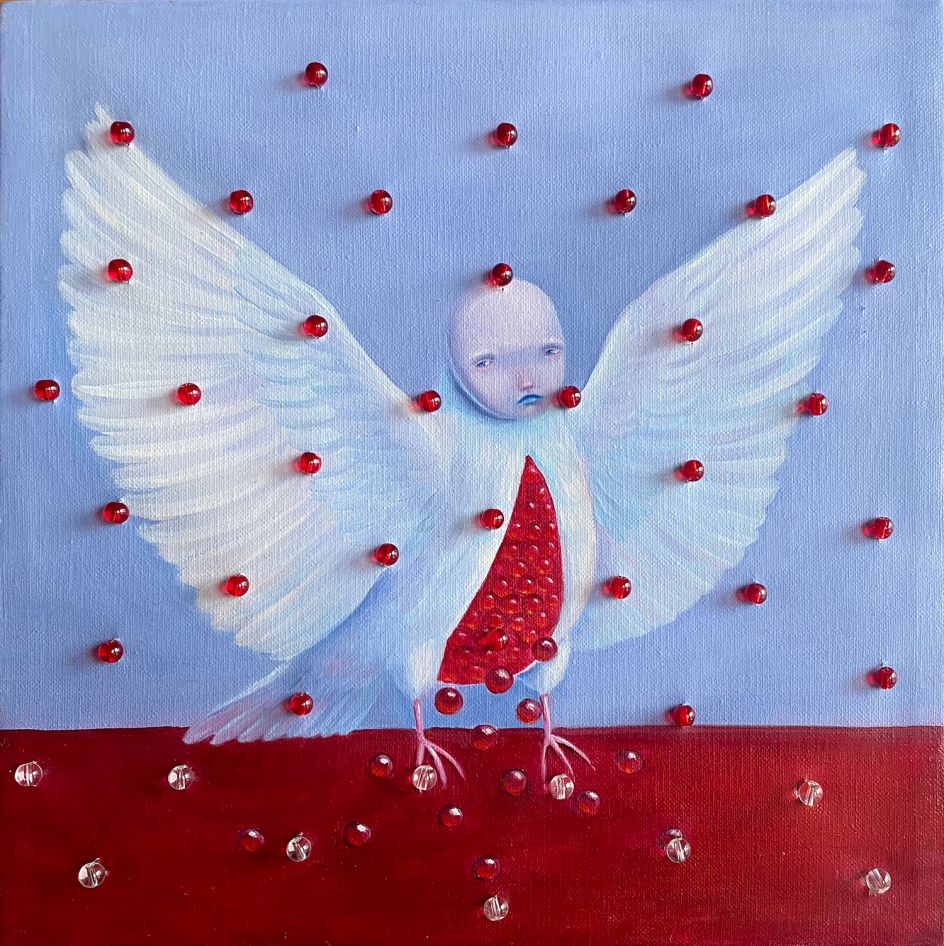
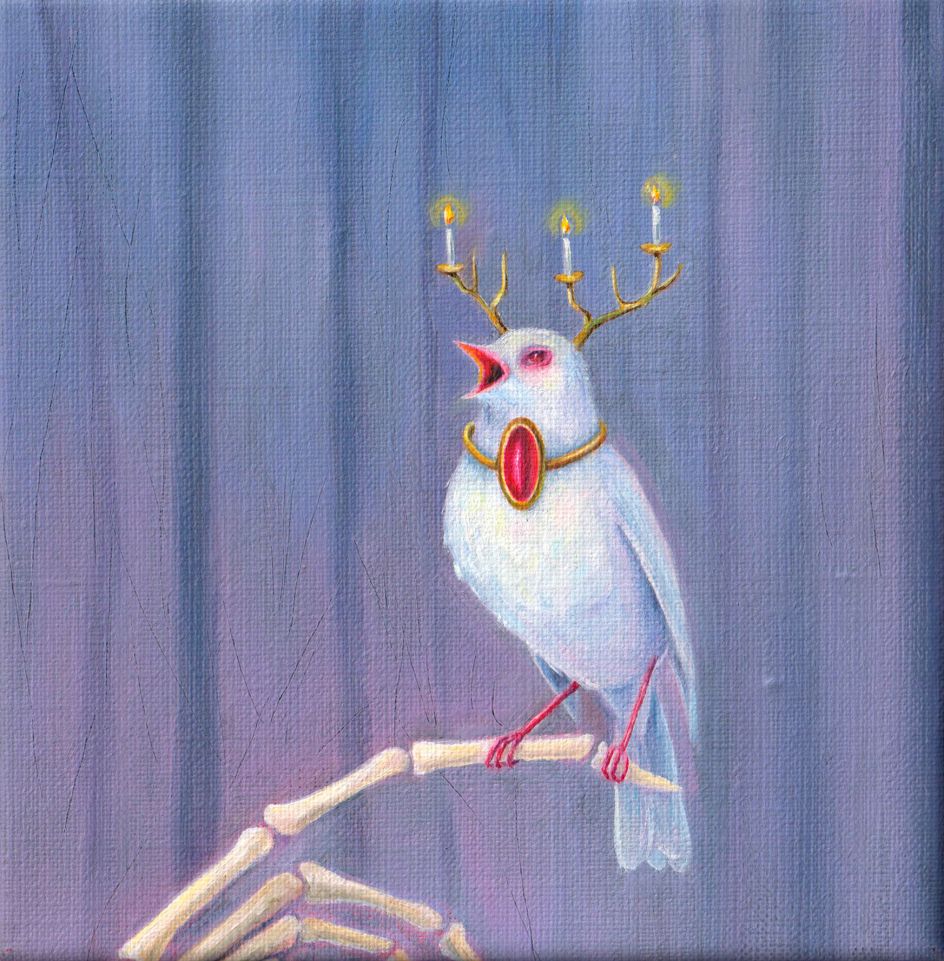
Julia is not one to impart too much information about her personal experiences when it comes to talking about her work. Instead, she prefers them to speak for themselves and for viewers to react to the paintings and the paintings alone. However, she does divulge that the red beads sewn into her canvases are intrinsically linked to her experiences during lockdown.
"The whole world seemed to be paused, which had an impact on me," she shares. "Some people talked about the end, some about the beginning, and we were waiting somewhere in between. At that time, the eyes of the characters in my sketches and paintings are closed. They are sleeping or have their eyes closed, trying not to see what's happening around them. Alternatively, they don't want to see it."
As for how this relates to her red beads, Julia observes that when liquid free falls in a zero gravity environment, it takes on a spherical shape. This, in turn, hints at the unusual environment and stasis in which the characters in her paintings exist. Not that this is a bad thing, though, she adds.
"It is valuable when a painting evokes emotions. No matter whether they're good or bad emotions, if you feel something, it is better than going away and feeling nothing."
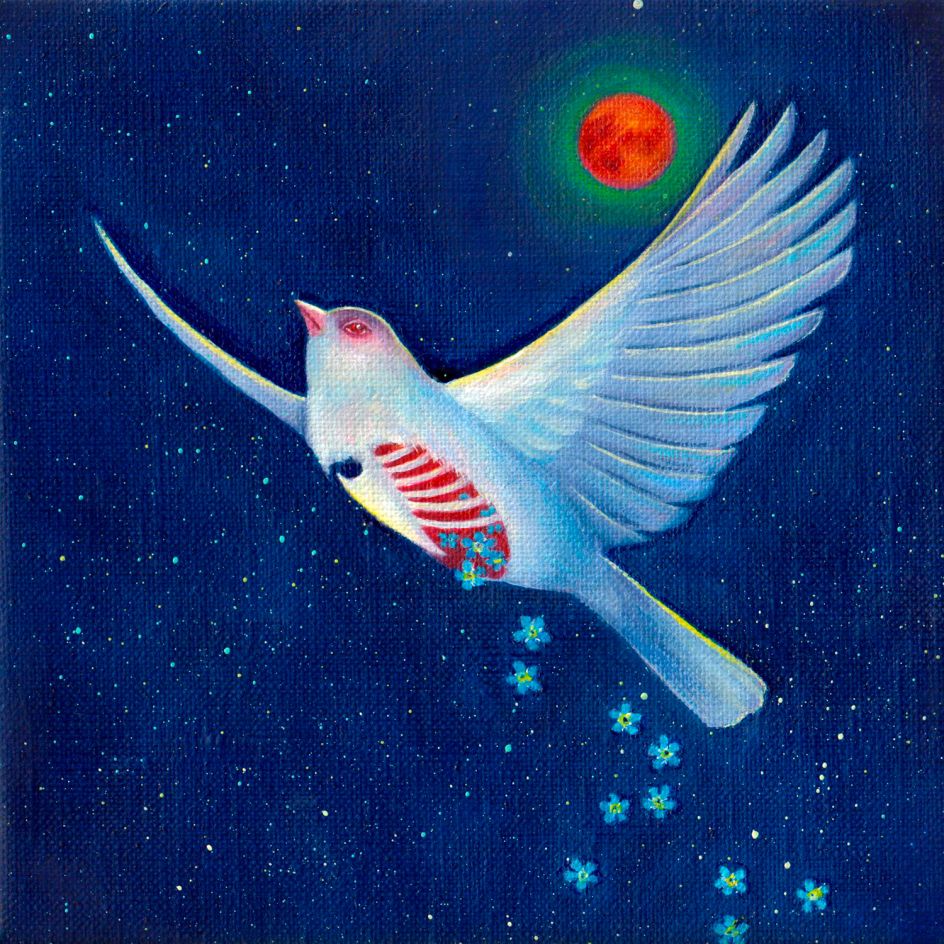




 by Tüpokompanii](https://www.creativeboom.com/upload/articles/58/58684538770fb5b428dc1882f7a732f153500153_732.jpg)


 using <a href="https://www.ohnotype.co/fonts/obviously" target="_blank">Obviously</a> by Oh No Type Co., Art Director, Brand & Creative—Spotify](https://www.creativeboom.com/upload/articles/6e/6ed31eddc26fa563f213fc76d6993dab9231ffe4_732.jpg)








